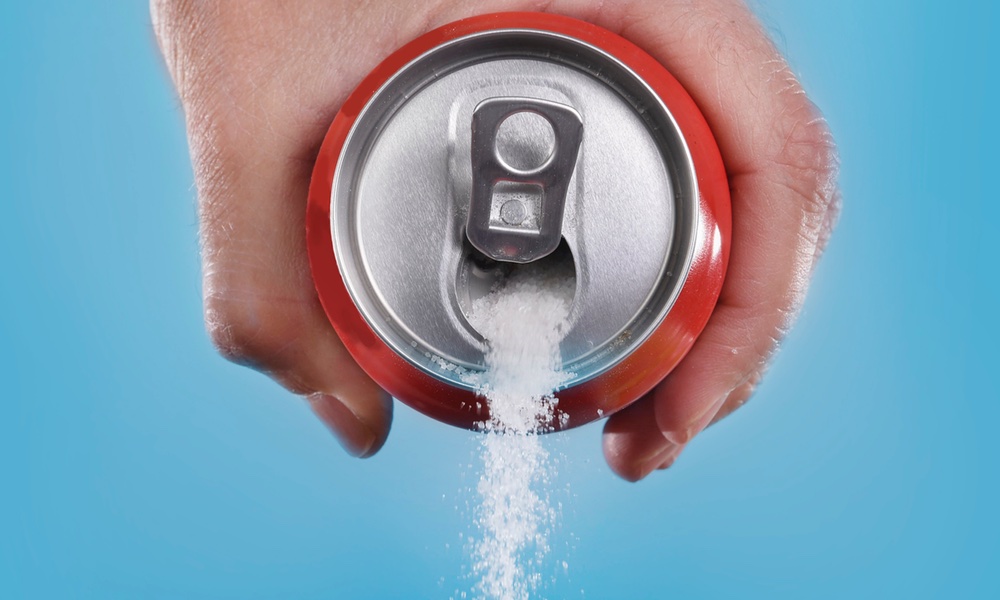Every 36 seconds someone in the United States dies of cardiovascular disease. For decades we were warned that fat in our diet contributed to the development of the disease. Nonfat and low-fat foods became commonplace on grocery store shelves as food manufacturers reformulated their recipes to reduce the fat content. It’s time for the same thing to happen with sugar, according to researchers.
A diet with too much sugar can lead to weight gain, diabetes, high blood pressure, chronic inflammation and fatty liver disease, all of which are associated with an increased risk for cardiovascular diseases like heart disease and stroke.
That’s why the U.S. National Salt and Sugar Reduction Initiative (NSSRI), made up of over 100 local, state and national health organizations, released a draft of guidelines for reducing the sugar content of packaged foods and beverages in 2018. The initiative has now been finalized and sets a goal of encouraging the food and beverage industry to commit to gradually reformulating their sugary food and beverages voluntarily.
To demonstrate the impacts of the sugar-reduction policy proposed by the NSSRI and hopefully motivate the industry to do the right thing, researchers from Massachusetts General Hospital, the Friedman School of Nutrition Science and Policy at Tufts University, Harvard T.H. Chan School of Public Health and the New York City Department of Health and Mental Hygiene created a model that predicts the health and healthcare cost savings that are likely to result if the NSSRI guidelines were adopted.Other harmful ingredients such as trans fats and sodium have already been successfully removed or reduced in the U.S. food supply, but the U.S. lags behind other countries in sugar reduction policies.
The model conservatively estimates that over 10 years the U.S. could save more than $4 billion in healthcare costs and $118 billion during the lifetime of people who are currently aged 35 to 79. When the costs of lost productivity from diseases related to excessive sugar consumption are included, if the Initiative became policy the total cost savings during the lifetime of the current adult population would be nearly $161 billion. Even if only partially implemented, the NSSRI would result in significant health and economic gains.
The NSSRI does not advocate drastic changes. Reducing the sugar in packaged foods by 20 percent and by 40 percent in beverages could prevent about 2.5 million cardiovascular events, nearly a half million cardiovascular deaths, and 750,000 cases of diabetes over the lifetime of U.S. adults.
Other harmful ingredients such as trans fats and sodium have already been successfully removed or reduced in the U.S. food supply, but the U.S. lags behind other countries in sugar reduction policies.
“Sugar is one of the most obvious additives in the food supply to reduce to reasonable amounts,” said Dariush Mozaffarian of the Friedman School of Nutrition Science and Policy at Tufts University, in a statement. “Our findings suggest it’s time to implement a national program with voluntary sugar reduction targets, which can generate major improvements in health, health disparities, and healthcare spending in less than a decade.”When the costs of lost productivity from diseases related to excessive sugar consumption are included, if the Initiative became policy the total cost savings over the lifetime of the current adult population would be nearly $161 billion.
Even without a national policy in place, you can create your own personal sugar reduction plan to protect your heart. Reduce the amount of sugar in your diet by limiting how often you eat sweet snacks and desserts. Ditch the sugary beverages for calorie-free drinks, water being the ideal choice.
Read food labels and avoid purchasing foods that lists any form of sugar in the first few ingredients or that list several forms of sugar in the product. Key words to look for other than sugar are syrup, nectar, juice or any word ending in -ose, such as fructose.
The study was published in Circulation.





